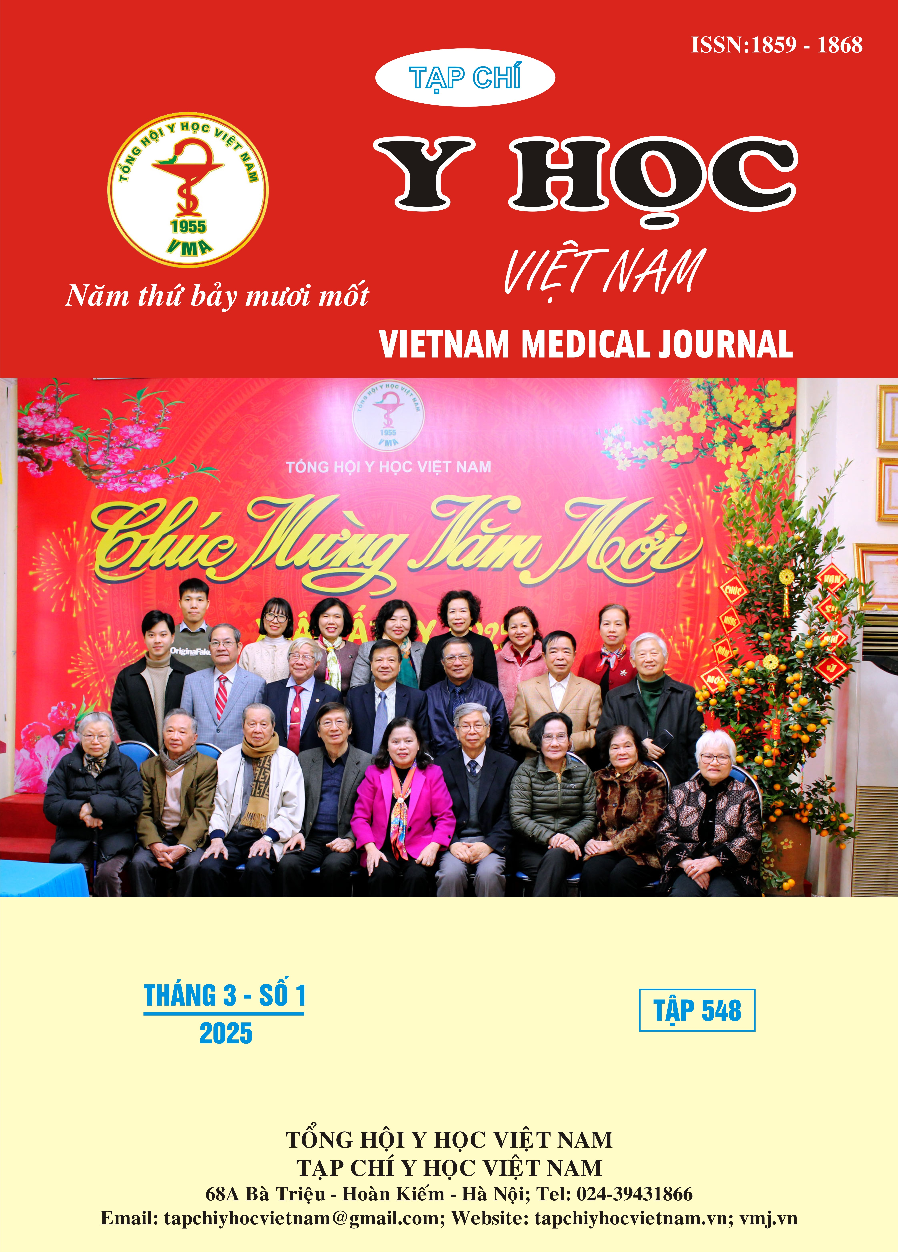PROGESTIN-PRIMED OVARIAN STIMULATION VERSUS GNRH ANTAGONIST PROTOCOL: A BRIEF EVALUATION OF OUTCOME AND TIME-LAPSE EMBRYO ASSESSMENT IN HANOI OBSTETRICS & GYNECOLOGY HOSPITAL
Main Article Content
Abstract
Objectives: This study compares the outcomes and embryo development dynamics between two ovarian stimulation protocols—Progestin-Primed Ovarian Stimulation (PPOS) and GnRH Antagonist—using a time-lapse monitoring system for in vitro fertilization (IVF) cycles. Subjects and methods: A total of 192 patients were divided evenly between the PPOS group (96 patients) and the GnRH antagonist group (96 patients), treated from July to December 2022 at the Hanoi Obstetrics and Gynecology Hospital. Key parameters compared include ovarian stimulation duration, fertilization rates, the number and quality of D5 embryos, and embryo kinetics observed through the time-lapse system. Results: The study found that ovarian stimulation in the PPOS group was significantly shorter than in the GnRH antagonist group (P<0.05), and the serum LH level on the trigger day was lower in the GnRH antagonist group (P<0.05). However, there were no significant differences in pregnancy rates or clinical pregnancy rates between the two groups. Conclusion: The conclusion suggests that dydrogesterone can replace GnRH antagonists to prevent premature LH surges, offering advantages such as oral administration and potential cost savings.
Article Details
Keywords
PPOS, Antagonist, Time-Lapse, IVF
References
2. Bosch E, Valencia I, Escudero E. Premature luteinization during gonadotropin-releasing hormone antagonist cycles and its relationship with in vitro fertilization outcome. Fertil Steril. 2003; 80(6): 1444-1449. doi:10.1016/j.fertnstert. 2003.07.002
3. Ata B, Seli E. Strategies for Controlled Ovarian Stimulation in the Setting of Ovarian Aging. Semin Reprod Med. 2015;33(6):436-448. doi:10.1055/s-0035-1567818
4. Guan S, Feng Y, Huang Y. Progestin-Primed Ovarian Stimulation Protocol for Patients in Assisted Reproductive Technology: A Meta-Analysis of Randomized Controlled Trials. Front Endocrinol. 2021;12: 702558. doi:10.3389/fendo. 2021.702558
5. Lê Khắc Tiến. Sử dụng Progestin để ngăn đỉnh LH sớm trong kích thích buồng trứng. Paper presented at: IVF Experts meeting 172022.
6. Tu X, You B, Jing M, Lin C. Progestin-Primed Ovarian Stimulation Versus Mild Stimulation Protocol in Advanced Age Women With Diminished Ovarian Reserve Undergoing Their First In Vitro Fertilization Cycle: A Retrospective Cohort Study. Front Endocrinol. 2021;12:801026. doi:10.3389/fendo.2021.801026
7. Ata B, Capuzzo M, Turkgeldi E. Progestins for pituitary suppression during ovarian stimulation for ART: a comprehensive and systematic review including meta-analyses. Hum Reprod Update. 2021;27(1):48-66. doi:10.1093/humupd/dmaa040
8. Huang B, Ren X, Wu L. Elevated Progesterone Levels on the Day of Oocyte Maturation May Affect Top Quality Embryo IVF Cycles. PloS One. 2016;11(1): e0145895. doi:10.1371/journal.p one.0145895
9. Vanni VS, Somigliana E, Reschini M. Top quality blastocyst formation rates in relation to progesterone levels on the day of oocyte maturation in GnRH antagonist IVF/ICSI cycles. PloS One. 2017;12(5): e0176482. doi:10.1371/ journal.pone.0176482
10. Bu Z, Zhao F, Wang K. Serum progesterone elevation adversely affects cumulative live birth rate in different ovarian responders during in vitro fertilization and embryo transfer: a large retrospective study. PloS One. 2014;9(6): e100011. doi:10.1371/journal.pone.0100011


